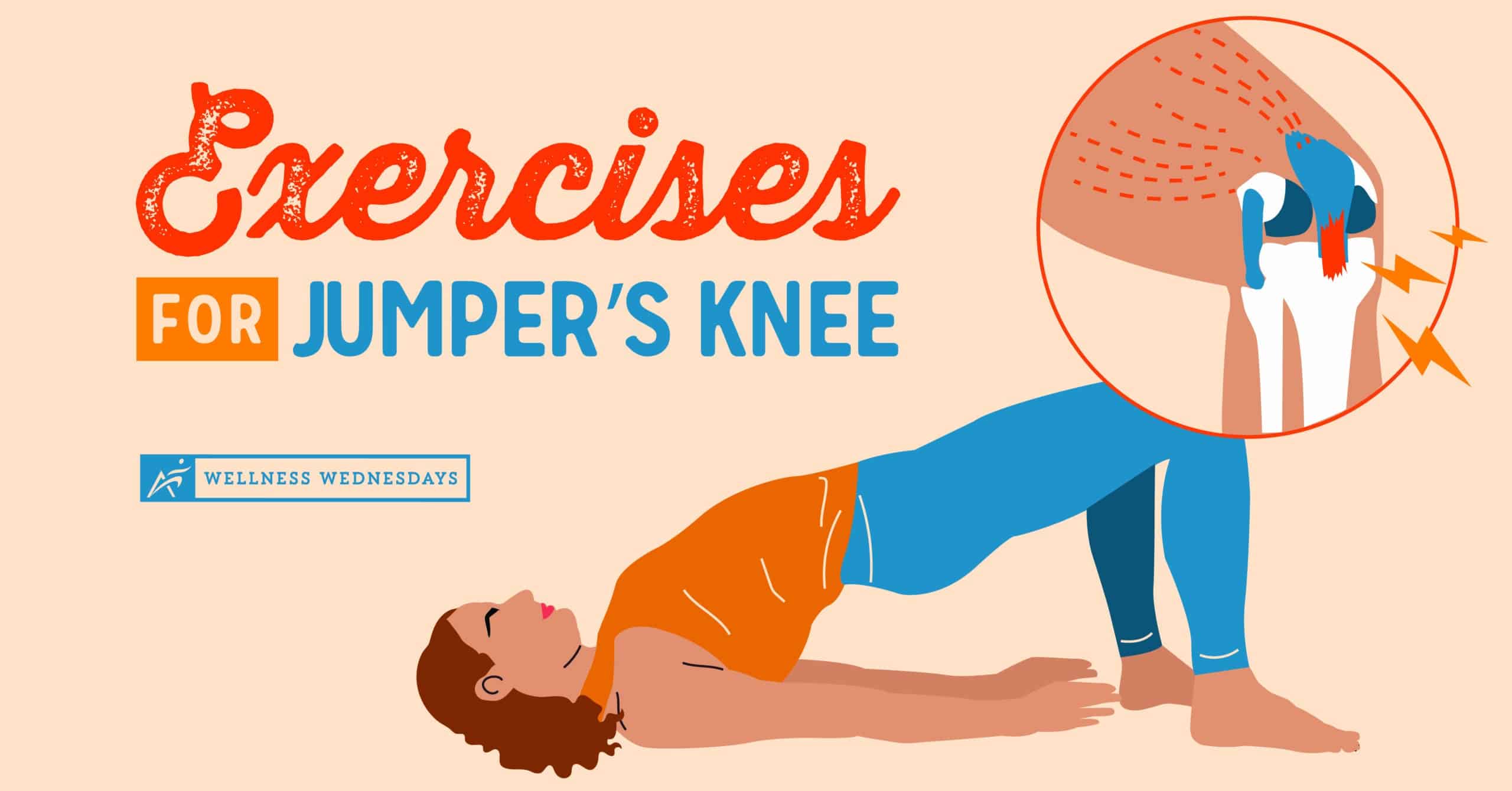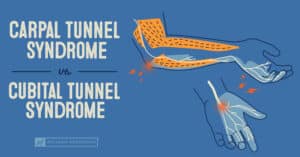The knee joint plays a major role in the body’s ability to move. As a hinge joint, it allows you to run, jump, pivot, and kick with relative ease. Unfortunately, these powerful movements can also leave the knee vulnerable to overuse injuries, such as jumper’s knee. Keep scrolling for five exercises for jumper’s knee that can help prevent injury and build strength!
Exercises That Can Help Jumper’s Knee
*Disclaimer: Always consult with your doctor before starting any exercise program. If you experience any numbness, tingling, or reproduction of your symptoms, please contact your doctor.
1) Adductor Leg Raise
- Lie on your side with the bottom leg straight and the top leg bent in front with your foot flat on the floor.
- Place one hand over your pelvis for added stability.
- Lift the bottom leg up, keeping it straight.
- Keep the foot and kneecap pointed forward during movement.
- Return to the initial position.
- Complete 3 sets of 10 to 15 repetitions.
2) Foam Roll Quadriceps
- Place a foam roller under your quads and balance on your elbows in a plank position.
- Brace your core and keep your lower back straight.
- Roll from just above the knee to right below the hip joint.
- Hold the foam roller over any tender areas for 10-20 seconds or until the pain lessens.
- For more emphasis on one leg, shift your body weight to one side or cross one leg over the other.
- Spend no more than 2 minutes on the foam roller.
3) Hamstring Stretch
- While lying down, place a resistance band under the foot.
- With the band securely placed, raise your leg up by flexing the hip and knee.
- Flex the foot slightly with your toes pointing towards you.
- Slowly straighten the knee by pushing your heel toward the ceiling.
- You will feel a stretch in the back of your thigh.
- Hold the stretch for up to 30 seconds, then return to the starting position.
- Complete 3 sets of 30-second holds.
4) Glute Bridges
- Lie flat on your back, keeping your knees bent and your feet on the floor.
- Roll your pelvis back towards the floor, reducing the gap between your back and the floor.
- Squeeze your gluteal muscles and brace your core.
- Lift your hips off the floor until your hips and torso make a straight line.
- Keep your core and glutes activated, holding this position for 2-3 seconds at the top of the motion.
- Slowly return to the starting position.
- Complete 2 sets of 10 repetitions.
5) Banded Clams
- Wrap a resistance band around your legs just above your knees.
- Lie on your side with your back and glutes against the wall.
- Bend your knees and press your heels together.
- Lift the top leg until it reaches a natural stopping point (about hip height when lying on your side), without letting your pelvis rotate.
- With a slow and controlled motion, return to the initial position and repeat as directed.
- Complete 3 sets of 15 repetitions.
What is Jumper’s Knee?
Jumper’s knee, also known as patellar tendonitis, occurs when the patellar tendon, a tough band of connective tissue that attaches the muscles in the front of your thigh to the kneecap (patella), becomes weakened over time.
Many repetitive activities like jumping or kicking can wear down the tendon. As a result, it is often seen in younger athletes and those who participate in activities like soccer, basketball, or volleyball. Additionally, performing quick or repetitive bending movements, like CrossFit workouts, can contribute to developing jumper’s knee.
How Do You Fix Jumper’s Knee?
Without proper treatment or intervention, jumper’s knee can lead to pain in the surrounding area and limit your ability to exercise. Fortunately, jumper’s knee can be improved with a few simple changes to your fitness routine and lifestyle, such as warming up and cooling down after exercising or avoiding exercise on uneven, rough surfaces.
The best way to stay ahead of a knee injury is to improve strength and range of motion in the area. Strengthening the glutes and legs can help support the knee joint during activity. Additionally, you can also stretch the leg muscles daily to help relieve any lingering tension that may contribute to knee pain. If minor tweaks to your routines or targeted exercises for jumper’s knee aren’t helping, consider seeking treatment from a healthcare professional who can help promote recovery through physical or manual therapy.
Kick Knee Pain To The Curb
If you’ve been suffering from knee pain, schedule an Airrosti appointment today. Our Providers conduct thorough injury assessments to identify the underlying cause of your pain and then create a custom treatment.
By treating pain at the source and not just focusing on the symptoms, our Providers can resolve most injuries, often in an average of three visits (based on patient-reported outcomes). We’ll also equip you with the resources and tools needed to treat your injury at home to help speed your recovery and prevent future injury.
Airrosti offers both in-clinic and virtual appointments. For more information, call us at (800) 404-6050.
Read our Medical Disclaimer here.










